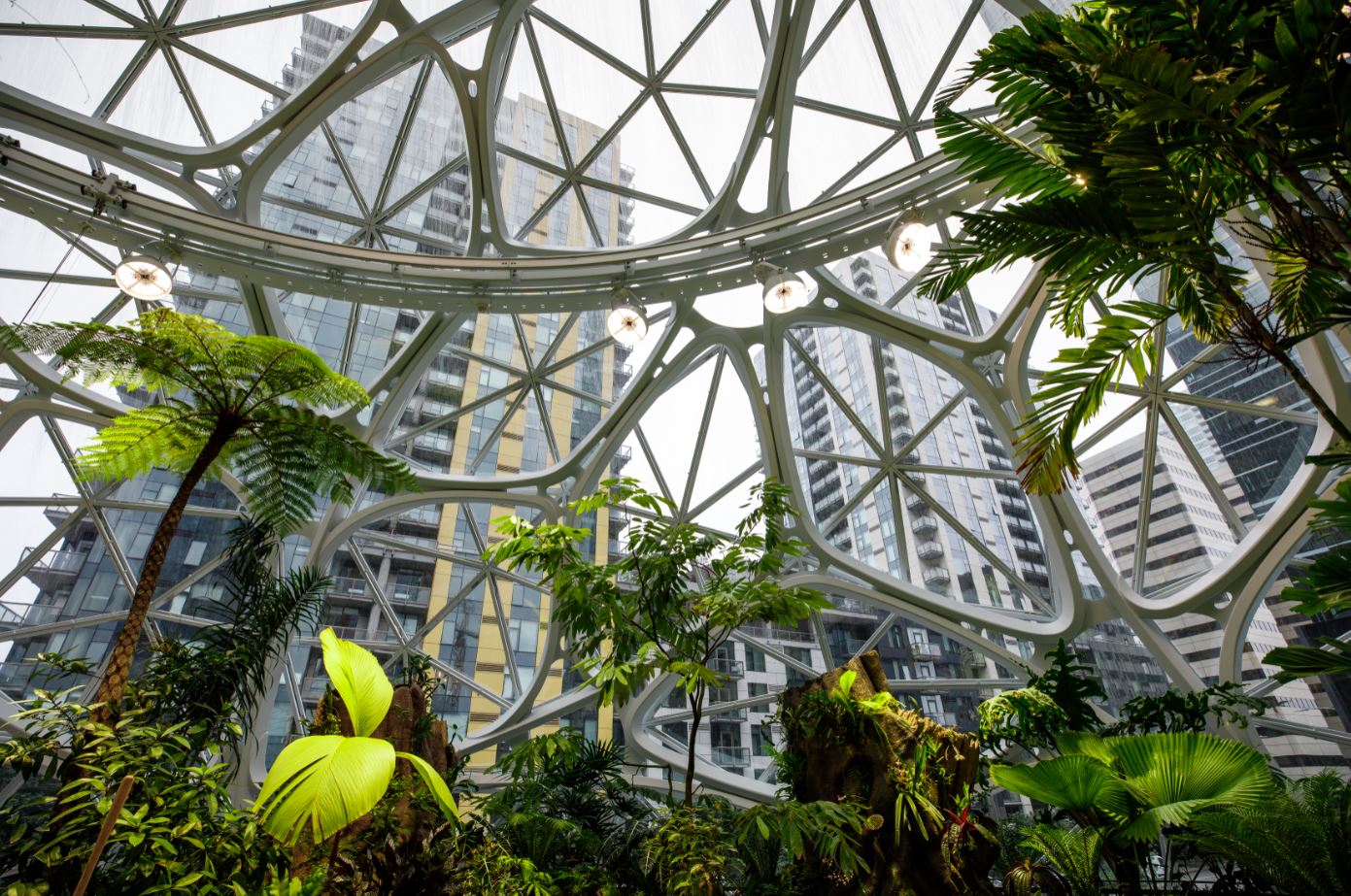The coronavirus pandemic made us more aware of creating healthier indoor spaces, especially in the workplace. Employers are starting to pay attention. “The Great Resignation” has fired up their interest in making workplaces safe and inviting.
I’ve read the words “biophilia” and “biophilic design” in the news and on websites more than ever before in the last 18 months. It’s mentioned in articles like this one, and this one, and even this one.
Good Earth Plant Company does its part by enriching peoples’ lives with plants and using our award-winning blog to inform our readers about the principles of biophilia and biophilic design. But what we haven’t done recently is explain what these terms mean. We answer the most common questions we hear about biophilia and biophilic design as part of our new FAQ blog series.
What is biophilia?
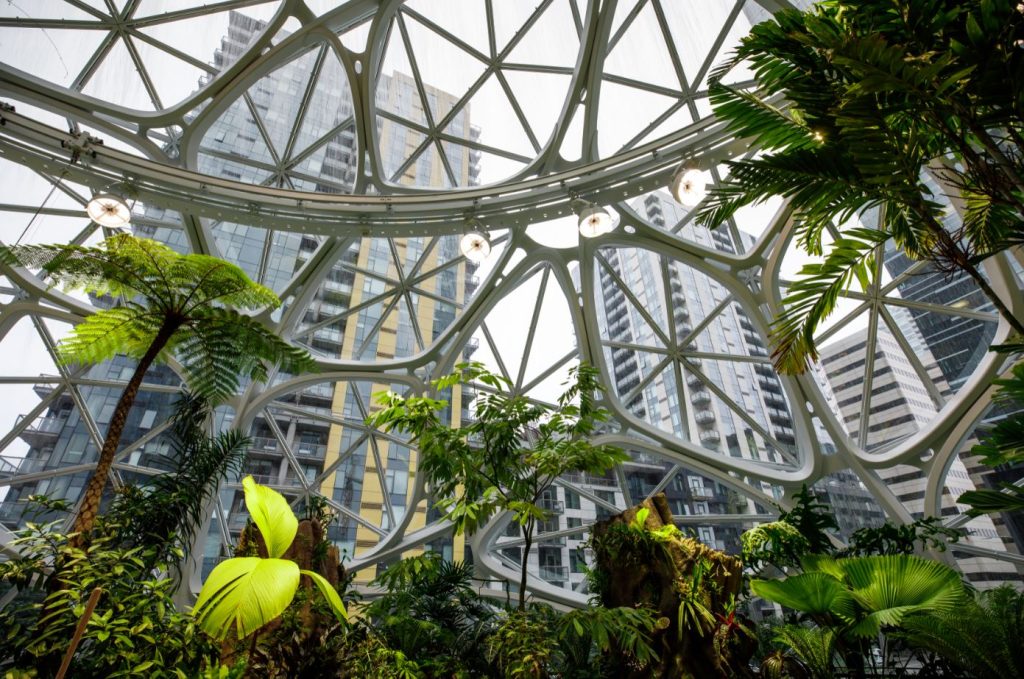
Amazon Spheres, an ultramodern office building with lush botanical gardens in Seattle, is an excellent example of biophilic design. Photo: Amazon
The concept of biophilia suggests an instinctive bond between human beings and other living systems. Biophilia is the science exploring the human connection to nature and all living things. In his 1973 book The Anatomy of Human Destructiveness, Sociologist Erich Fromm described it as “the passionate love of life and all that is alive.” Biologist Edward Wilson wrote in 1984 that human beings are biologically hardwired to need a connection with the natural world.
What is biophilic design?

Biophilic design is a trend transforming modern workplaces. Infographic: NewPro Containers and Green Plants for Green Buildings
Whether in architecture or interior design, biophilic design seeks to connect building occupants more closely to nature. Biophilic buildings incorporate natural lighting and ventilation, natural landscape features, and other elements to create a more productive and healthier built environment for people. Natural light, living plants, living walls, natural textures and materials, and nature views will provide a positive impact. Simulations such as artwork, moss walls, and replica walls are also just as effective.
How is biophilic design applied to indoor spaces?
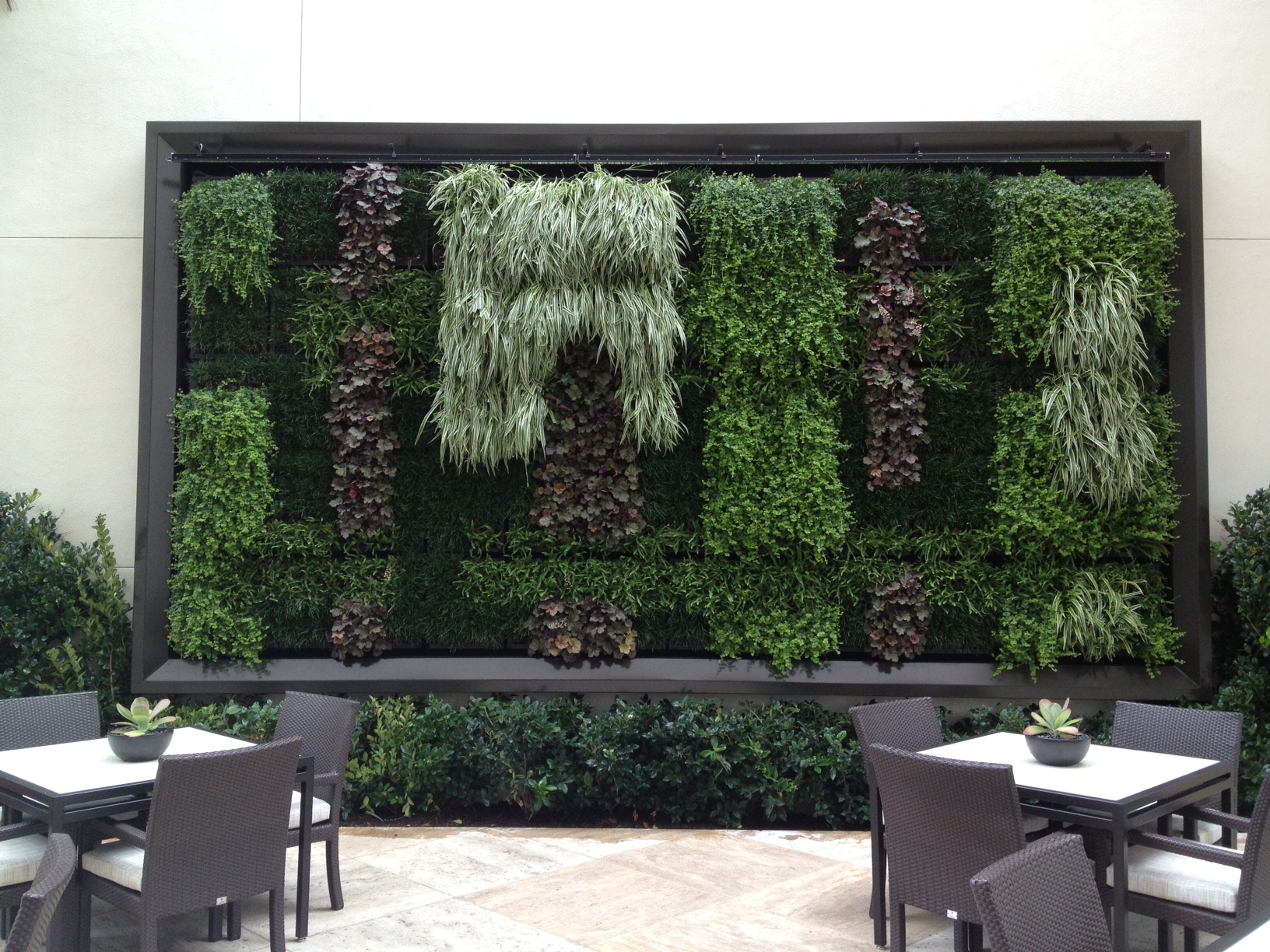
Good Earth Plant Company designed and installed this living wall for The Irvine Company, an excellent example of “Nature In The Space.”
According to biophilic design thought leaders like architect Elizabeth Calabrese, AIA, LEEP AP, biophilic design strategies fit into one of three significant experiences: direct experience of nature, the indirect experience of nature, and experience of space and place.
There are 24 individual qualities of biophilic design. They include:
- Direct experience: contact with green elements such as plants, views of nature, water, and natural airflow.
- Indirect experience: the use of natural materials such as wood or natural fabrics like cotton and wool; exposure to images of nature in artwork; and the use of natural shapes and forms.
- Experience of space and place: How is your own cultural and ecological attachment to a particular indoor area affected?
Does nature in the workspace improve productivity?
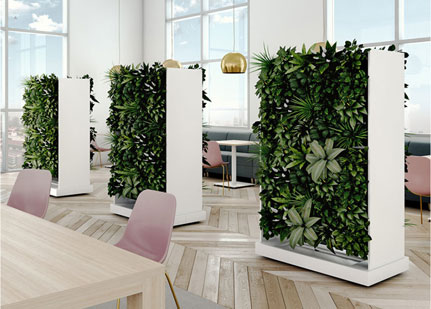
Bringing plants into workspaces cleans the air, provides safe physical barriers, and offers benefits to your creativity and productivity. They pay for themselves! Photo: Courtesy By Nature Design
Yes, and this is important to our reintegration and reimagining of the need for a post-pandemic workplace. Multiple studies show a positive relationship between the presence of nature in the workplace and employee wellness and productivity. The design think tank Human Spaces reports employees working in environments with natural elements like plants and sunlight have a 15 percent higher level of well-being. This translates into a six percent increase in productivity and a 15 percent increase in creativity.
Think about what a six percent efficiency increase would mean in your business. Imagine one creative idea that turns into the next Tesla, Bitcoin, or even Scrub Daddy (look it up). What would you be willing to invest in getting there?
What is LEED certification?
From the U.S. Green Building Council’s definition: “LEED (Leadership in Energy and Environmental Design) is the most widely used green building rating system in the world. Available for virtually all building project types, from new construction to interior fit-outs and operation & maintenance, LEED provides a framework that project teams can apply to create healthy, highly efficient, and cost-saving green buildings. LEED certification is a globally recognized symbol of sustainability achievement.”
What is the WELL Building Standard? How is it different?
The WELL Building Standard recognizes our human connection to nature and the positive effects on our health and wellness. It looks at everything from the amount of natural light, choice of color palettes, to the presence of living plants. Indoor potted plants and vertical gardens or walls are specifically called for as part of the certification standards. It was created through seven years of medical research by leading physicians, scientists, architects, and other wellness professionals.
For example, placing plants covering a minimum of one percent of each floor in a multi-story building is part of the requirements. Installing a living wall, which covers the largest available single wall or multiple living walls with one per building floor, also meets the certification guidelines. There isn’t a specific way to make this happen, so the creative possibilities are endless.
What is the difference between the WELL Building Standard and LEED certification?
The WELL Building Standard tells us about the impact of a building on human beings, not just the efficiency of things like lighting or air conditioning. It starts with the LEED indoor air quality standard, then rates factors affecting human beings. How much access to natural light and outdoor airflow is there? Is the physical space comfortable? Does it provide occupants enough room? Even access to nutrition is measured. You can see how important these factors take on where the return to work after the pandemic is concerned.
How do I integrate biophilic design and biophilia into my workplace?
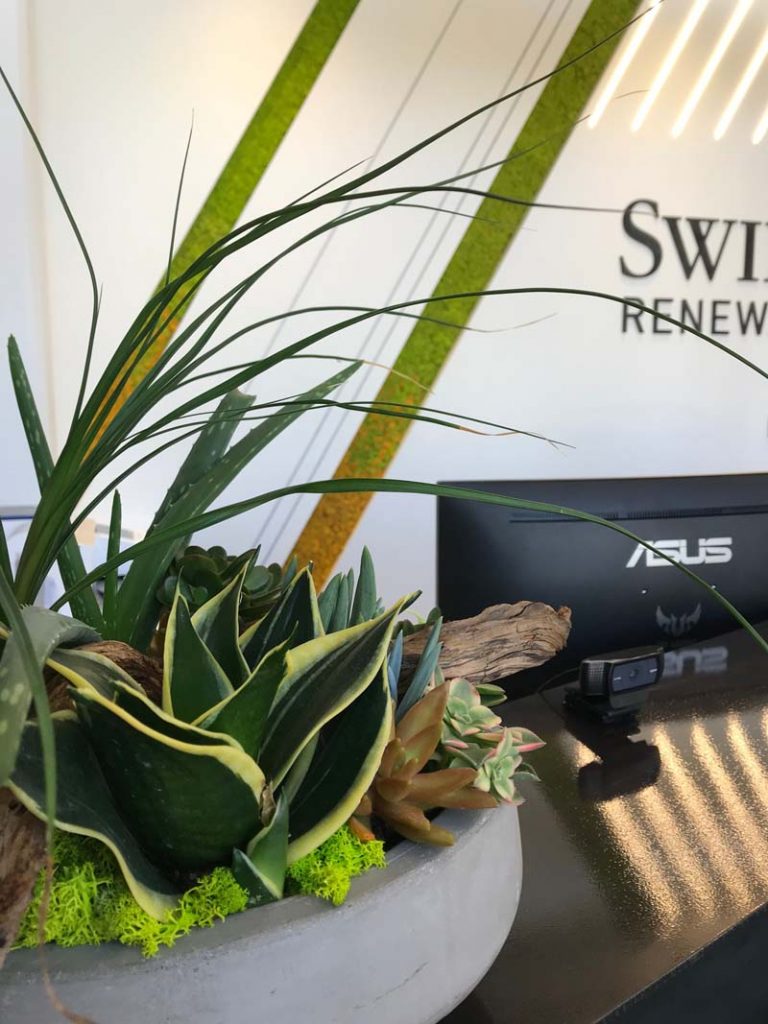
Our work for Swinerton Energy shows how simple and cost-effective additions of plants and nature inspired features make a major difference in workplace health, wellness, and employee satisfaction.
There are several simple design changes easily made in workspaces. Call us biased, but the easiest, quickest, and most cost-efficient way is the addition of plants into your environment. This action also gets building owners and facilities managers thinking big picture about the amount of space people have to work in or the best way to make buildings safer and healthier. Safety, health, and worker productivity all go together.
Natural light, plants and vegetation, living walls, natural textures and materials, and views of nature will all provide the positive impact employers need to hire and keep their employees. And it can all be done for less than the cost of a cup of coffee per employee daily. If you’re stocking a company lunchroom with complimentary coffee, you could be making the whole company healthier and more productive for the same cost!
Right now, if you’re thinking about getting some help to do this, you need to contact us at Good Earth Plant Company. We enrich peoples’ lives with plants. It’s all we do! Please email us or call 858-576-9300. Operators are standing by! Well – not really, but I always wanted to write this.

